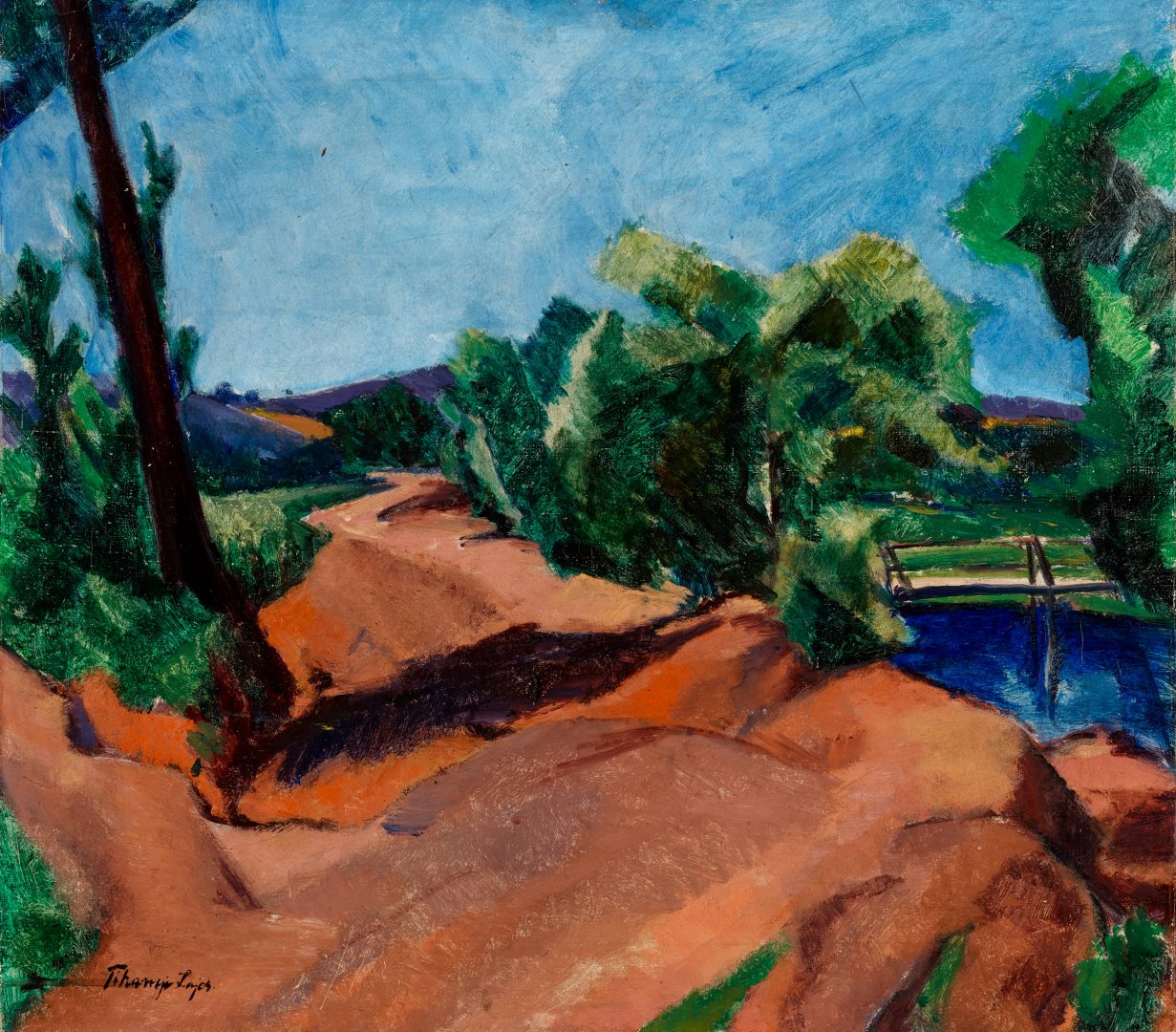Hall 4 - 2. view
Winding road
TIHANYI, LAJOS (1885–1938)
Winding Road, c. 1913
oil on canvas, 53x60 cm; marking at the bottom left: Tihanyi Lajos
Fine Arts Collection, Inv. No.: 77.43.
Hungarian avant-garde painting, which was influenced by the then latest fine arts trends of the early 20th century, such as expressionism, cubism, constructivism and futurism, made its first waves through the activities of a group of painters known as The Eight, who were active between 1909 and 1912. The deaf-mute Lajos Tihanyi was the group’s second youngest painter after Róbert Berény, boasting outstanding artistic talent and sense of character. His most famous works include the portraits of his fellow artists, friends and several defining intellectual figures, along with his self-portraits. These works all emphasize the main characteristics of the model in a unique, distorted and expressive style. Because of the modern expressive force of these artworks, the painting of Tihanyi is often compared to the Austrian artist Oskar Kokoschka. In addition to portraits, Tihanyi also made just as remarkable landscape paintings, with his finest works showcasing elements of Cézanne’s approach of emphasizing visual tectonics. Landscapes also made up a significant part of his oeuvre from the beginning of his artistic pursuits around 1907 until the end of the 1910s. In 1919, the politically left-leaning artist left the country and moved first to Vienna, then Berlin and finally settled in Paris. Landscape painting was no longer a defining feature in the more abstract second period of his.
Winding Road presents the land in a rather basic form without the inclusion of any figurative elements, focusing on the expressive harmony of the colours and compositional structure instead. The landscape is composed of only four main colours and their gradients, which include green, salmon pink, blue and purple. Broad strokes and dynamic patches of colour form the foliage of the trees and the curves of the dirt road at irregular angles. Even though the aforementioned elements take up no more space of the painting as the sky, the hillside in the background and the small body of water, these still manage to dominate the image and direct the view to the plastic shapes in the front and centre. The road thins abruptly as it moves inwards from its tense muscular bundle-like width in the foreground, suggesting a sudden deepening of space with its energetic and winding line.
The nearest parallels of this piece within his oeuvre can be dated to the summer of 1913, during which Tihanyi painted a rather similar looking landscape in the Upper Hungary settlement of Szécsénykovácsi. Another artwork of his that was likely also made there features the same small bridge that can be seen on Winding Road. The frame of the painting includes a fragmentary pencil inscription, presumably from the painter himself, which suggests that the painting was made in August 1914.
The painting was purchased by the Herman Ottó Museum on the 42nd auction of the Second-hand Store Company in 1977.
Ákos Barkóczi
